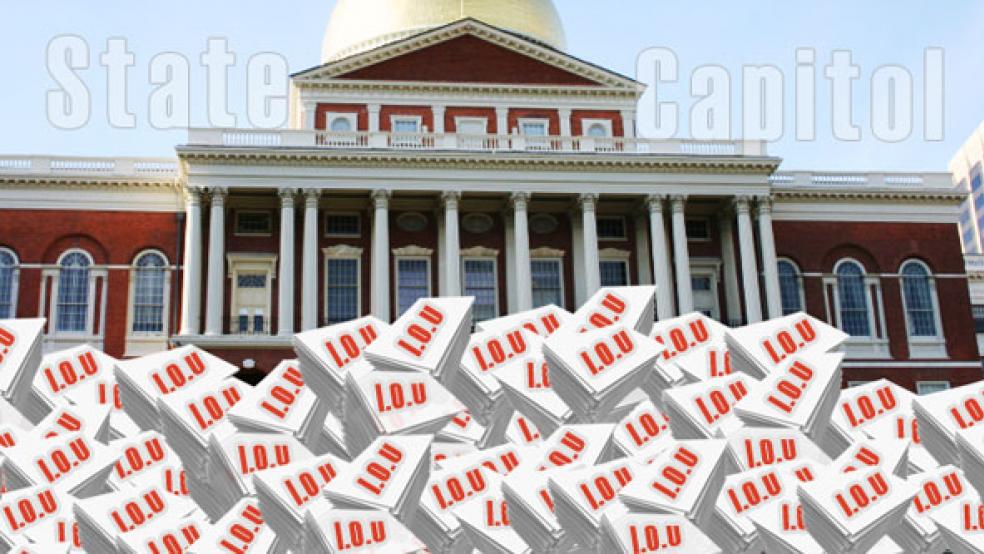State governments heaved a sigh of relief last week after Congress put the finishing touches on a fiscal 2014 spending bill that provided them with a two year reprieve from across the board cuts in federal grants under the sequester.
But they still face plenty of long term uncertainties about federal assistance once the sequester kicks back in – which is prompting questions and debate about the efficacy of federalism in the 21st Century.
Related: $1 Trillion Spending Bill Splits Winners and Losers
The initial sequester cuts last year wreaked havoc with state university research programs, Head Start and state and local health programs, secondary and higher education program and transportation projects. The federal government provides more than $600 billion a year in grants to the states through more than 200 programs, according to the latest figures--the sequester threatens to slash those programs by many billions of dollars.
“There are still concerns among state budget officials in regards to what it will mean down the road as Washington, D.C. deals with the ongoing issue of how to address or balance the federal budget,” said Arturo Perez, a fiscal analyst with the National Association of State Legislatures.”
About 18 percent of total federal grant funds to states are subject to sequestration. That resulted in cuts of about $7.5 billion between January and September of 2013, according to the Center on Budget and Policy Priorities. As a share of each state’s revenues, federal grants subject to the sequester vary between 5 and 10 percent – or an average of 6.6 percent nationally.
Anna Chu of the Center for American Progress Action Fund, said that there was a “sense of relief” among some state and local officials that “the vitriol and the fighting [on Capitol Hill] and the uncertainly has stabilized a little bit for the next two years. We’ve seen some indication that the economy is slightly stronger, that the budgets of the municipalities and states are a little bit more improved.”
Related: Debt Ceiling Déjà Vu: New Showdown Ahead?
Discretionary federal spending flowing to the states has averaged about 1.4 percent of the Gross Domestic Product during the past three decades, but that will fall to less than 0.9 percent by 2021 – forcing significant cuts in federal support for education and most other domestic programs, according to analysts.
“Although the recent bipartisan budget deal will take the edge off the sequester during the next two years, sequestration’s impact on states will be profound,” said William A. Galston and Korin Davis of the Brookings Institution in a paper released last Friday. “Federal discretionary spending – funds subject to the annual appropriations process—flowing to the states has averaged about 1.4 percent of GDP during the past three decades. Under current law, this will fall to less than 0.9 percent by 2021.”
“This would mean significant cuts in federal support for education and most other domestic functions for which funds must be appropriated every year,” according to the Brookings paper.
Related: Paul Ryan’s New Idea Is Really Smart—But Will It Fly?
Galston, a senior fellow in governance and a former domestic policy adviser to President Bill Clinton and Davis, a project manager in governance studies tackled the sequester’s long-term implications to the states as part of an examination of 21st Century Federalism and proposal for reform.
“From the beginning, federalism has been a defining feature of our constitutional order,” the two scholars wrote. As our country has changed, our federal system has evolved significantly as the national government has assumed added responsibilities for economic stabilization, income and health security, and functions such as criminal justice and education that were previously understood as falling within the states’ ‘police powers.’”
The paper notes that an aging population, increasing health care costs and challenging fiscal prospects “are straining government capacities at every level.”
The paper outlined the long term challenges of federalism and offered four suggestions for moving ahead:
- Rebuild the government’s capacity to monitor and assess intergovernmental trends. Congress over the years dismantled its capacity to monitor and assess intergovernmental trends. The goal should be to rebuild that capacity as cost-effectively as possible while minimizing institutional changes that are bound to be controversial.
- Create a new federal loan window for states during economic downturns. Even though states entered the Great Recession with substantial rainy-day funds, the recession’s depth and duration quickly drained them. In future cases like that, the federal government could structure temporary assistance to the states as loans rather than grants that would have to be repaid with interest.
- Lighten the financial burden that Medicaid programs for the poor imposes on the states. Medicaid spending has mushroomed. As of 2011, the federal government’s expenditures for Medicaid amounted to $275 billion while the states spent $157 billion that year. The federal government should remove long-term care expenses from the program and institute two new innovative programs to fund these expenses.
- Rethink federal and state roles in the 21st century. Even though top-down changes have been hard to come by, the respective roles of the federal government and the states have continued to evolve. Much more remains to be done – especially in the areas of education and infrastructure.
Top Reads from The Fiscal Times:
- You Can No Longer Take Your Company to Court
- Paul Ryan’s New Idea is Really Smart—But Will It Fly?
- Feds Blow $100 Billion Annually on Incorrect Payments





